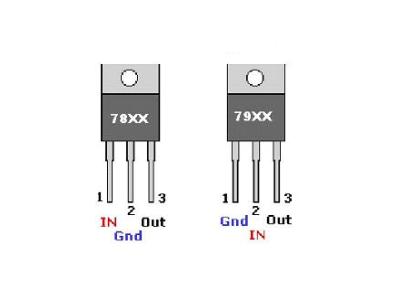So I put together a small +18V -18V PSU on a piece of prefboard using a small 230V ~ 2 x 24V 31mA transformer, a pair of bridgerectifiers, a pair of 3300uF 50V caps and 7818 and 7918 as output regulators... fairly simple.
Though now I get +18V on one rail and -36V on the other rail ? ..there is +44V and -44V before the regulators.
I made a drawing tracing the prefboard to see if I made a mistake;

I think this should be ok... (I might have drawn my capacitor polarity symbol wrong)
Is it possible I have coocked the regulator when soldering two small caps on it's legs right near it's housing ?
I have done this multiple times, this 7918 seems to be of a different brand though..
I don't get what's going on here
Though now I get +18V on one rail and -36V on the other rail ? ..there is +44V and -44V before the regulators.
I made a drawing tracing the prefboard to see if I made a mistake;

I think this should be ok... (I might have drawn my capacitor polarity symbol wrong)
Is it possible I have coocked the regulator when soldering two small caps on it's legs right near it's housing ?
I have done this multiple times, this 7918 seems to be of a different brand though..
I don't get what's going on here


































